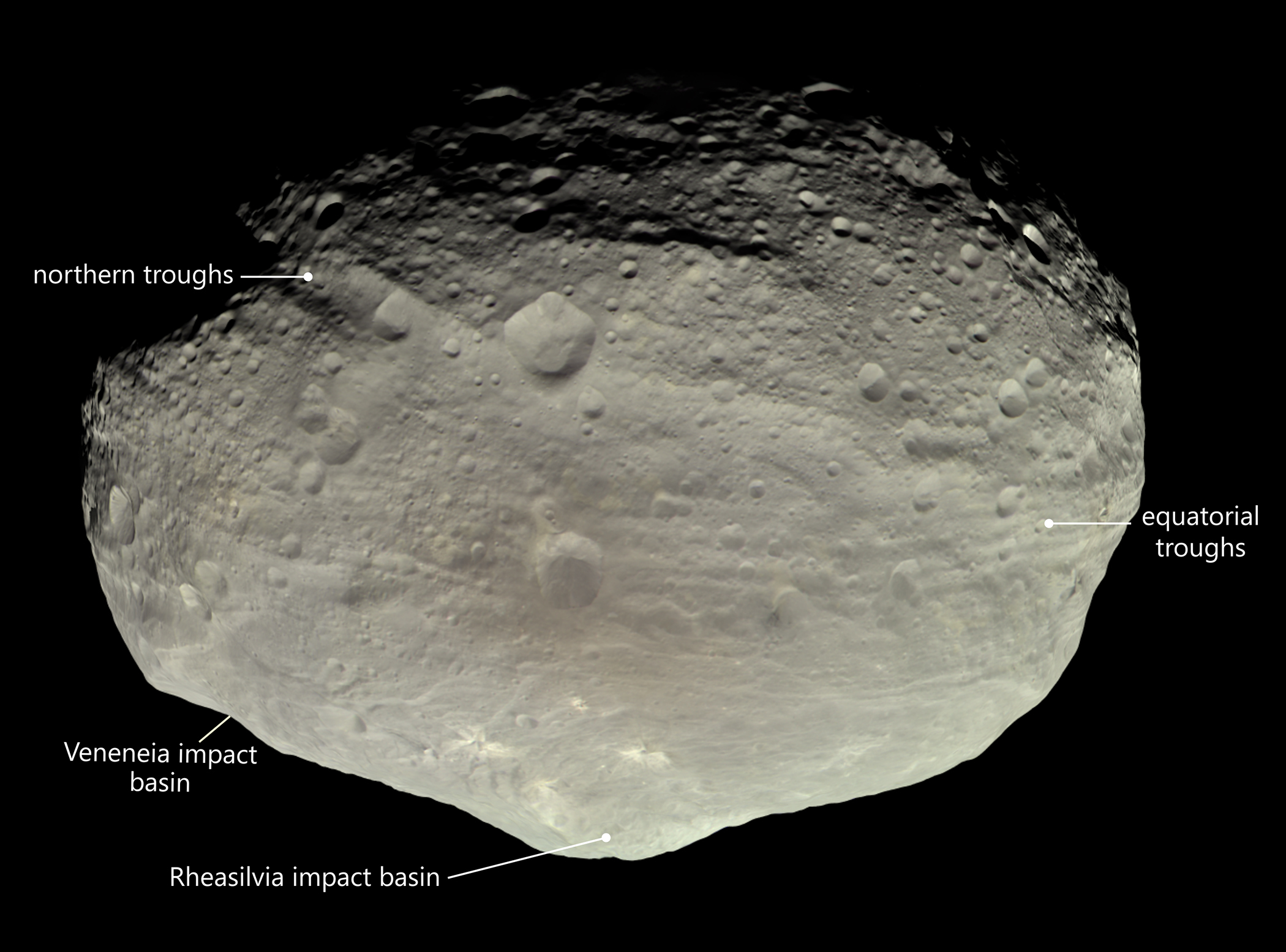The mysterious troughs on giant asteroid Vesta keep puzzling scientists

Vesta, a massive world in the solar system's asteroid belt, sports two huge trough features that have long puzzled scientists, and it doesn't look like the mystery will be solved anytime soon, at least not in a new study of the features.
NASA visited Vesta in 2011 and 2012 with the Dawn spacecraft, which mapped the large asteroid's surface in unprecedented detail. Among the features the spacecraft studied were two vast troughs: one dubbed Divalia Fossae, which stretches around more than half of the asteroid at its middle; and one called Saturnalia Fossae in the northern hemisphere of the massive space rock.
Theories on how exactly the two features formed vary, but one suggests each is the result of a cataclysmic impact. Scientists hope that solving the mystery of how these structures formed will shed light on the history of Vesta — and possibly other large bodies in the solar system.
"Vesta was on the way to becoming an Earth-like planet, too, but planet formation stopped along the way there early in the history of our solar system," Christian Klimczak, a geologist at the University of Georgia and co-author on new research about the asteroid, said in a statement. "Therefore, studying Vesta helps us understand the very early days of our planetary neighborhood and how our own planet formed."
In photos: Asteroid Vesta as seen by NASA's Dawn spacecraft
Since Dawn first spotted the two troughs, scientists have wondered whether the structures may be connected to two other stark features on Vesta: massive impact basins dubbed Rheasilvia and Veneneia. Tantalizingly, each trough appears to ring one impact basin, leading scientists to wonder whether two impacts each created one basin and one trough.
Researchers behind the new work wanted to tackle the mystery using a common tool in planetary science, crater counting. The technique is based on the fact that because crater impacts occur randomly, older surfaces have been hit more often than younger ones and therefore display more scars.
Breaking space news, the latest updates on rocket launches, skywatching events and more!
While crater-counting doesn't allow precise dating of surfaces, it can sometimes determine whether one site is older than another. In addition, places where impact features overlap show scientists that the feature on top formed more recently than the one below it.
But when the scientists counted and mapped craters on Vesta, they found that there wasn't enough information to solidly determine how the basins and troughs were related to each other. That said, the research doesn't disprove the hypothesis that one impact formed Veneneia basin and Saturnalia trough, another Rheasilvia basin and Divalia trough either.
"Our result shows that the troughs and basins have a similar number of the crater of various sizes, indicating they share a similar age," Jupiter Cheng, a doctoral candidate at the University of Georgia and co-author on the study, said in the statement. "However, the uncertainties associated with the crater counts allow for the troughs to have formed well after the impacts."
The research is described in a paper published in the September 2021 issue of the journal Icarus.
Email Meghan Bartels at mbartels@space.com or follow her on Twitter @meghanbartels. Follow us on Twitter @Spacedotcom and on Facebook.

Meghan is a senior writer at Space.com and has more than five years' experience as a science journalist based in New York City. She joined Space.com in July 2018, with previous writing published in outlets including Newsweek and Audubon. Meghan earned an MA in science journalism from New York University and a BA in classics from Georgetown University, and in her free time she enjoys reading and visiting museums. Follow her on Twitter at @meghanbartels.
